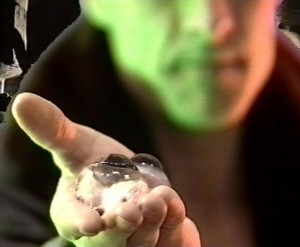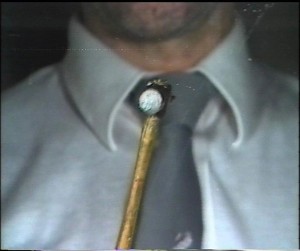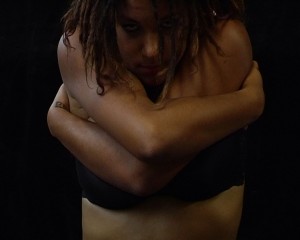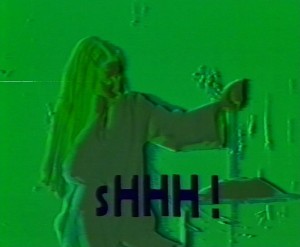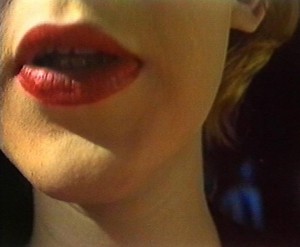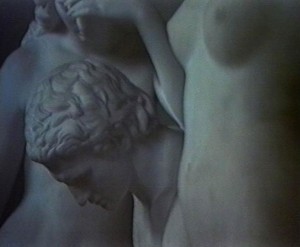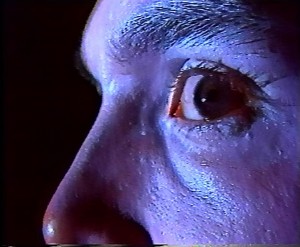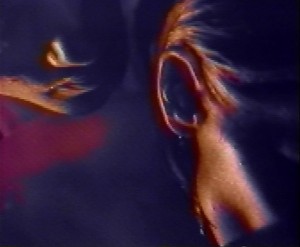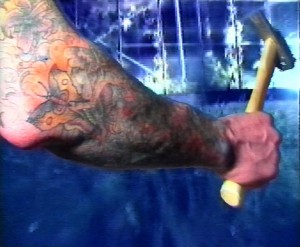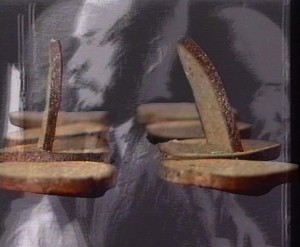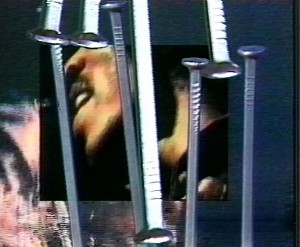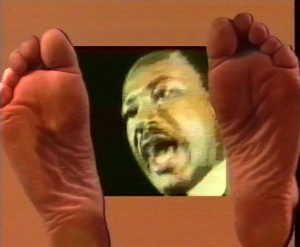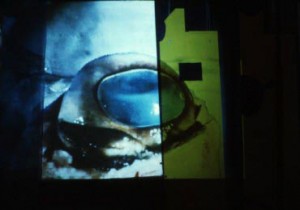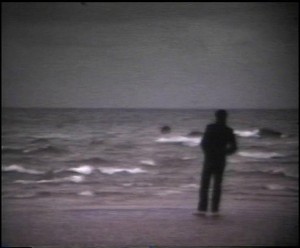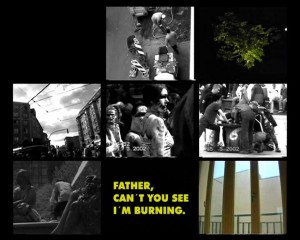VIDEO WORK
1971 – 2006
After a period with 8 mm and 16 mm film, video work became a daily practice, a parallel and integrated part of Mail Art.
1975 Gdansk, Poland. During an artist meeting in Gdansk, the organizers had borrowed a video camera from the local shipyard. The camera arrived each morning at 9.30 am and left 3.30 pm together with the uniformed guard. The guard never left the camera out of sight and when he left in the afternoon the days shooting, the only available tapes came with the camera, went with him. I have no idea, what kind of effect these art shootings had on the evening screening on the shipyard censor committee. I only know this: Paranoia was an important dialog partner at the time.
1982 E45. Late one night, driving on an empty highway, returning from a editing session, after 3 days of continuous editing. A video beam appeared on my retina (a ”video beam” occurred on the video monitor, in the time of analogy editing, when you stopped the video tape). I blinked a couple of times to get rid of the beam, but nothing happened. Had to stop at the next gas station. After an hour the beam faded away. A beautiful video performance, of video itself talking to the body.
These two events marked this video entrepreneur’s development and experiences of video as a tool, more than just another medium, political and very expressive with a strong connection to the subconscious.
To this Mail Art Archivist, the video work is like a second personality and it became a part of Mail Art network quite early (1972). Soon regular exchanges, festivals and social gatherings took place. The Lomholt Mail Art Archive contains a large number of video productions by different artists, collaborations, catalogues and paraphernalia’s from video festivals and social gatherings, has not been included in the book.
The daily practice of video. Four possible cinematic detours:
1970 A Manuscript for a 60m2 Film (see FotoWerke). A film experience through the feet. As a Land Art structure that opens up to other realities.
1977 “Exchangeable Photo”. (see LFP). Another film manuscript based on photographic realities unlimited. The open storyboard, in the light of Eisenstein’s montage theory and Godard as the traveller companion.
1981 The Civil Servant and Scandinavia is Always Good for a Haircut (see FotoWerke) Lomholt/Below. Detours through a world of administration and physical realities.
1984 Gentle Tourism #I-V (see FotoWerke and Video Work). Politics without objects, bodies without organs, stories without focus. Gentle Tourism.
With an introductory essay
IMAGE FLOW
by Helge Krarup
Abstract: The work by Niels Lomholt in moving pictures began with 8 mm-film in the 1960´s, from the 70´s it was with video. As opposed to most films and videos on the alternative scene in those years, the videos by Lomholt were perfect in the performance of camera, light, color etc. His cinematic language is outstanding in its complexity, having more than one layer of image, image copied into image, several layers of sound and text, and written text passing by in the image. His locations are international. The story is cryptic, strongly fragmented, as in the language of poetry. The videos have often been part of an installation, as one element among many others. The reading of this by the audience demands that one selects one´s focus among the many pictorial sources. This is a filmic language that places Lomholt in the international art world, as opposed to the local Danish context.
*
*

